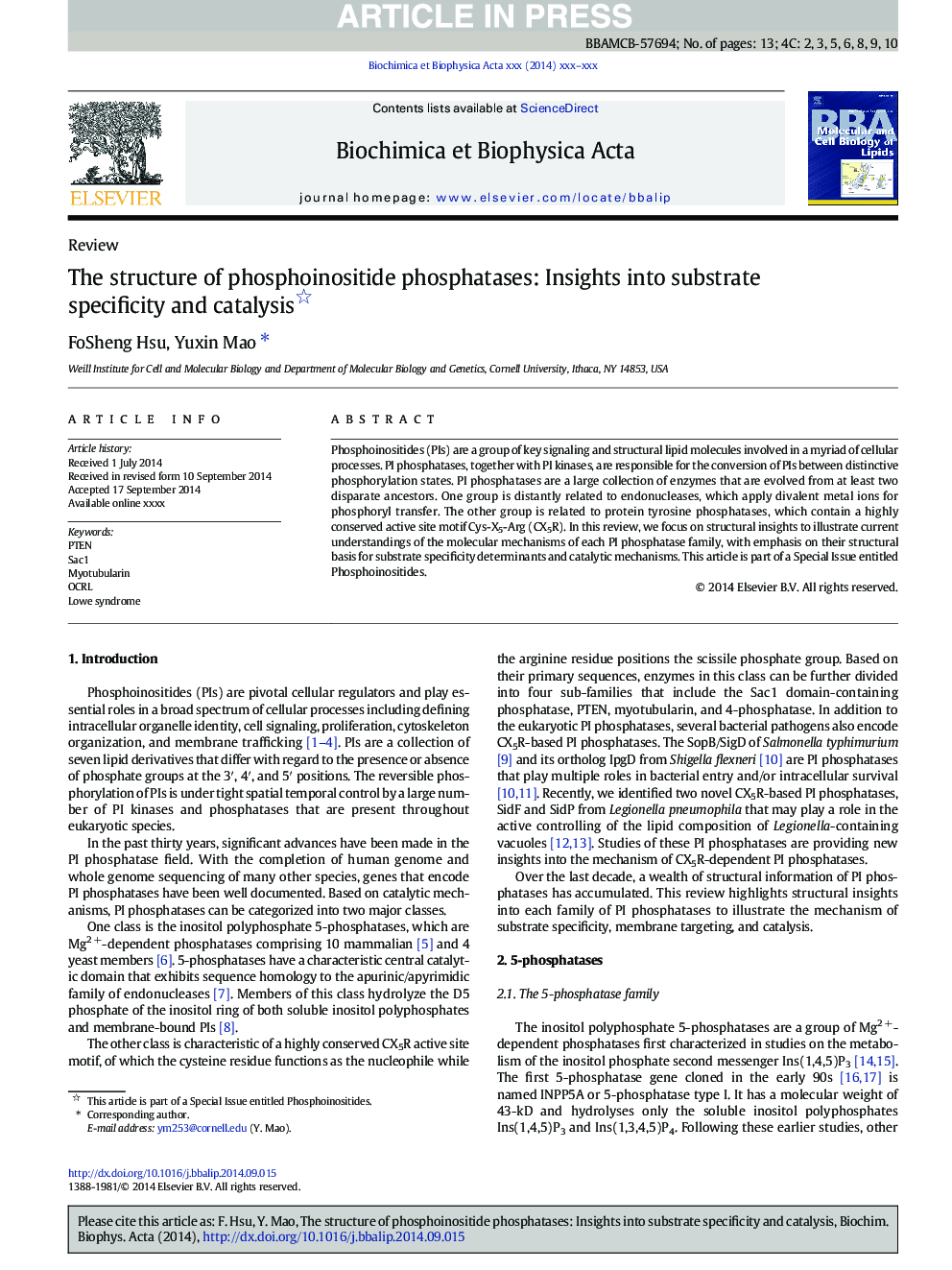| Article ID | Journal | Published Year | Pages | File Type |
|---|---|---|---|---|
| 8301992 | Biochimica et Biophysica Acta (BBA) - Molecular and Cell Biology of Lipids | 2015 | 13 Pages |
Abstract
Phosphoinositides (PIs) are a group of key signaling and structural lipid molecules involved in a myriad of cellular processes. PI phosphatases, together with PI kinases, are responsible for the conversion of PIs between distinctive phosphorylation states. PI phosphatases are a large collection of enzymes that are evolved from at least two disparate ancestors. One group is distantly related to endonucleases, which apply divalent metal ions for phosphoryl transfer. The other group is related to protein tyrosine phosphatases, which contain a highly conserved active site motif Cys-X5-Arg (CX5R). In this review, we focus on structural insights to illustrate current understandings of the molecular mechanisms of each PI phosphatase family, with emphasis on their structural basis for substrate specificity determinants and catalytic mechanisms. This article is part of a Special Issue entitled Phosphoinositides.
Keywords
Related Topics
Life Sciences
Biochemistry, Genetics and Molecular Biology
Biochemistry
Authors
FoSheng Hsu, Yuxin Mao,
